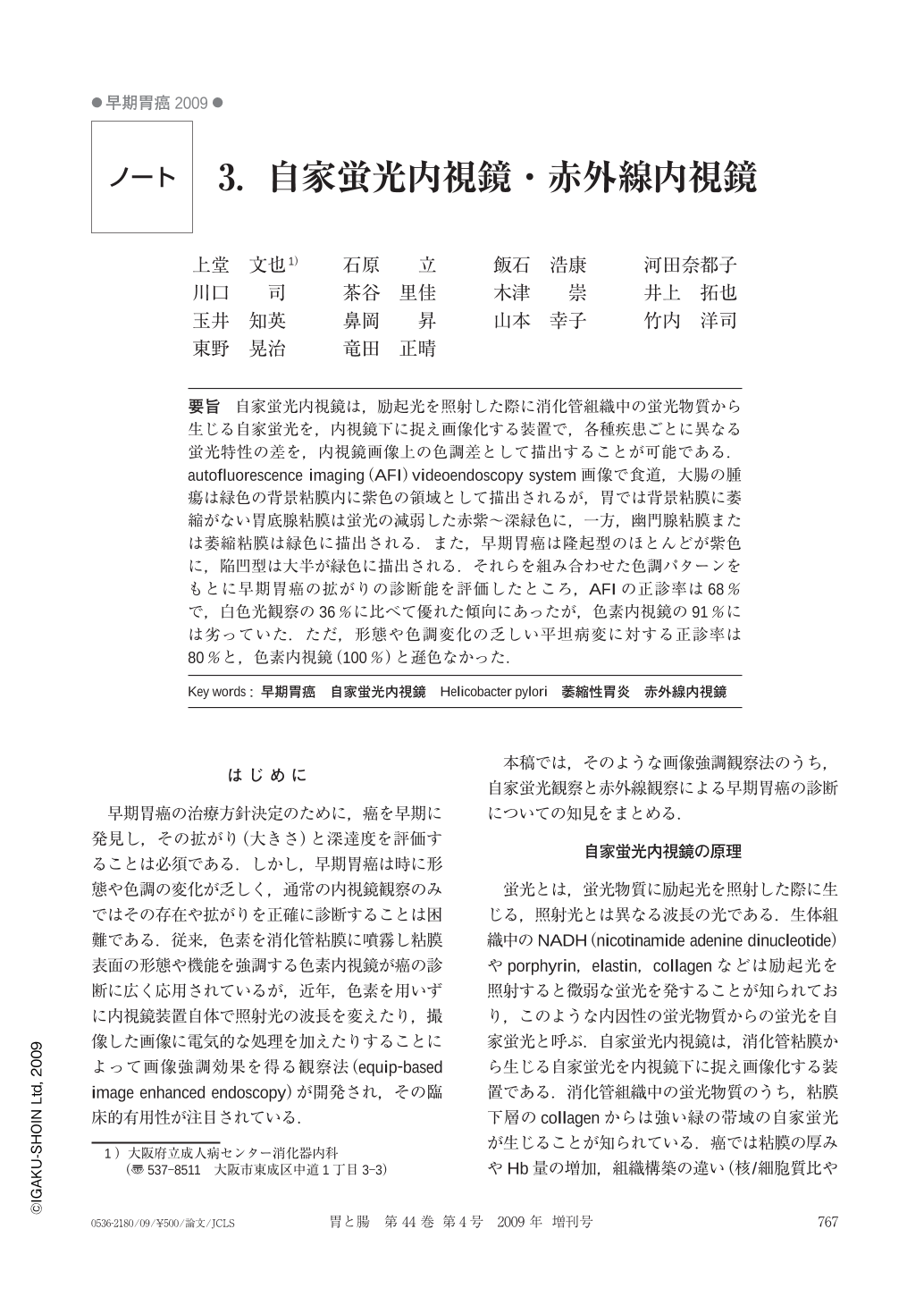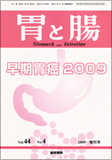Japanese
English
- 有料閲覧
- Abstract 文献概要
- 1ページ目 Look Inside
- 参考文献 Reference
要旨 自家蛍光内視鏡は,励起光を照射した際に消化管組織中の蛍光物質から生じる自家蛍光を,内視鏡下に捉え画像化する装置で,各種疾患ごとに異なる蛍光特性の差を,内視鏡画像上の色調差として描出することが可能である.autofluorescence imaging(AFI)videoendoscopy system画像で食道,大腸の腫瘍は緑色の背景粘膜内に紫色の領域として描出されるが,胃では背景粘膜に萎縮がない胃底腺粘膜は蛍光の減弱した赤紫~深緑色に,一方,幽門腺粘膜または萎縮粘膜は緑色に描出される.また,早期胃癌は隆起型のほとんどが紫色に,陥凹型は大半が緑色に描出される.それらを組み合わせた色調パターンをもとに早期胃癌の拡がりの診断能を評価したところ,AFIの正診率は68%で,白色光観察の36%に比べて優れた傾向にあったが,色素内視鏡の91%には劣っていた.ただ,形態や色調変化の乏しい平坦病変に対する正診率は80%と,色素内視鏡(100%)と遜色なかった.
The autofluorescence imaging videoendoscopy system(AFI)produces real-time pseudocolor images from computation of detected natural tissue fluorescence from endogenous fluorophores that are emitted by excitation light. In this system, autofluorescence mainly originates from collagen in the submucosa in the digestive tract, and the mucosa looks green in AFI images. Mucosal thickening caused by the presence of fundic mucosa, elevated or flat neoplasm, hyperplasia, inflammation, etc... decrease the autofluorescence from the submucosa and represent it as purple or dark green color. A depressed type tumor does not affect autofluorescence intensity so it looks green, and when it is surrounded by fundic mucosa it appears as a green area in a purple background. Because of the color difference in the AFI image, diagnostic accuracy of AFI for tumor extent was better than that in white light images but was not as good as that of chromoendoscopy. Ulceration or inflammation interfere with diagnostic ability in AFI images but flat tumor extent was diagnosed with an accuracy equal to that of chromoendoscopy.

Copyright © 2009, Igaku-Shoin Ltd. All rights reserved.


